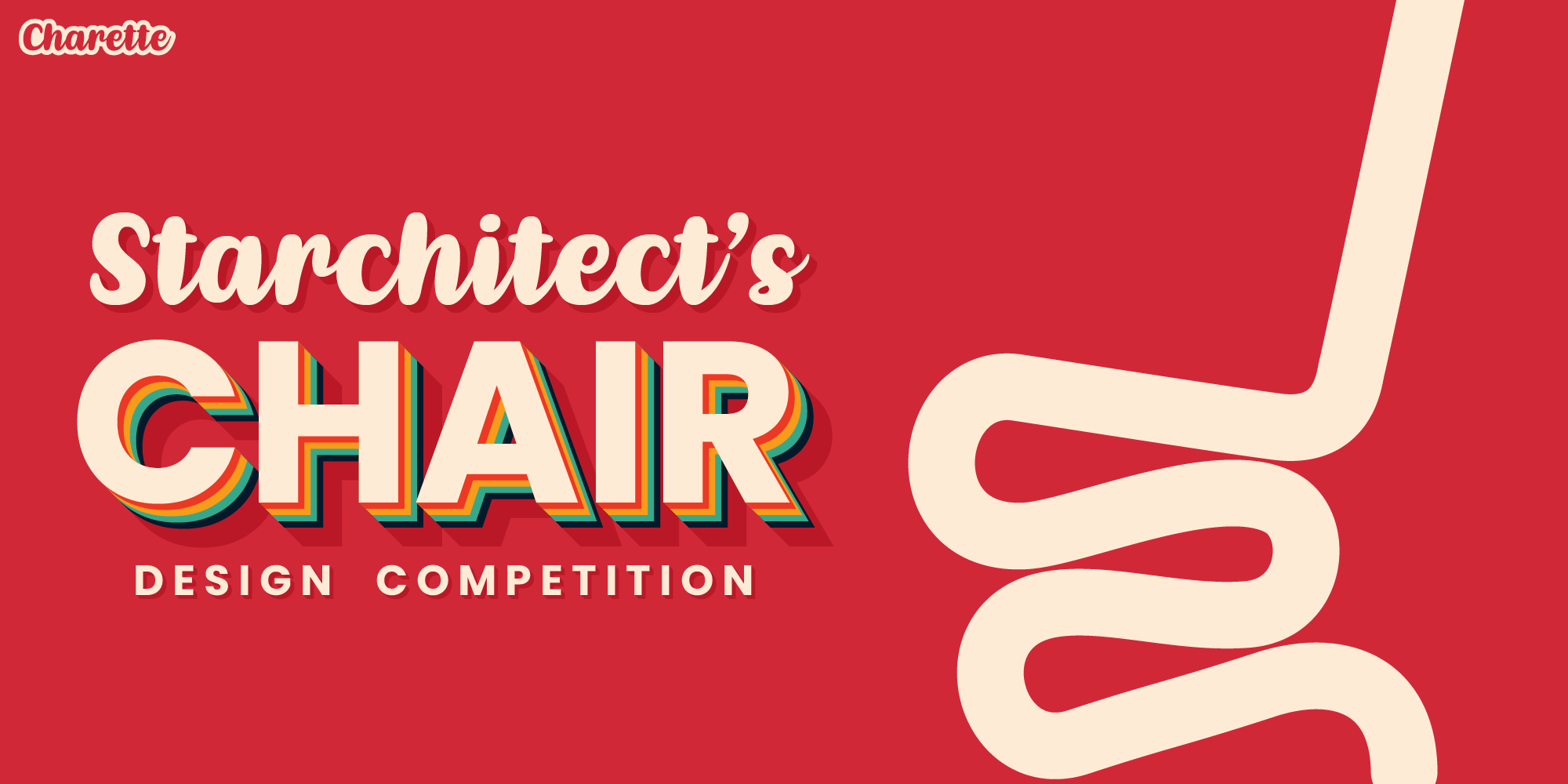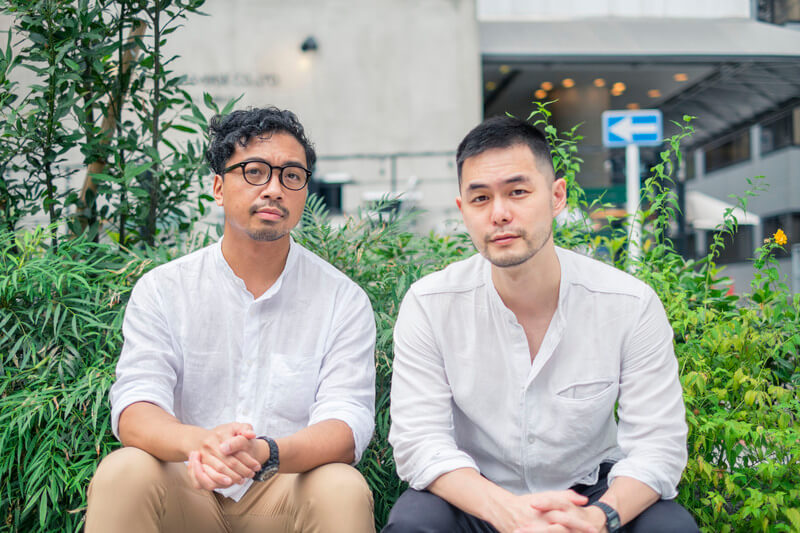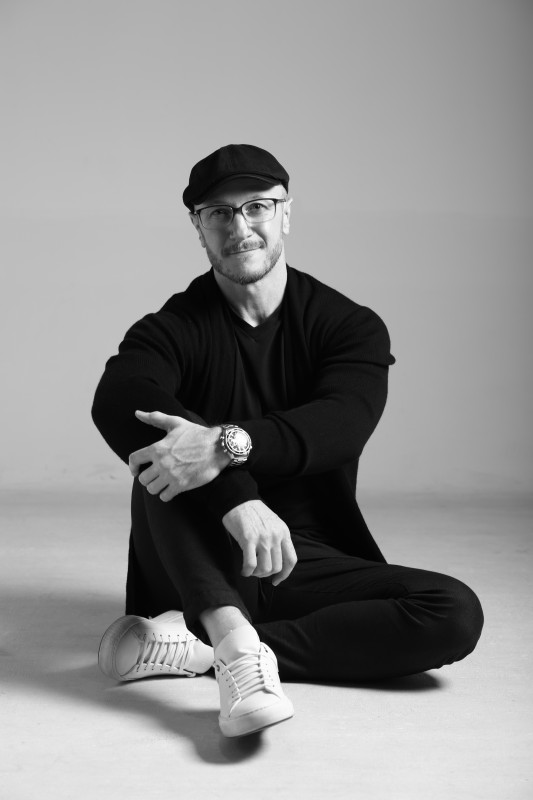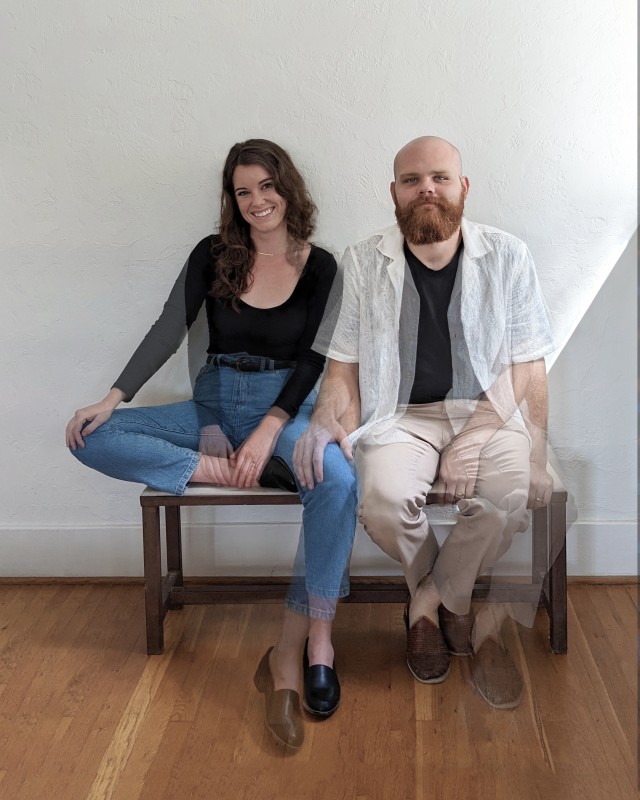
Starchitect's Chair
Meet the Winners - 2022
First Prize winners

Randy Kadarman & Ziwei Zhu
We have studied at the TU Delft in the Netherlands and are currently living in Tokyo Japan for about 4 years. As a duo with different design backgrounds, we aim to offer creative and new perspectives to ourselves, the general public and the client.
Randy Kadarman is a Chief Product Designer at GK Dynamics and has finished Bachelors and Masters in Industrial Design at the TU Delft in the Netherlands. Having a love for fashion and tech, he often explores technology and beauty that center around the human form. This ranges from sneaker designs and fashion silhouettes all the way up to sports gear and two-wheeled vehicles. Professionally, he experiments with digital creation tools to find new ways to create and communicate products.
Ziwei Zhu is a Senior Architectural Designer at Sou Fujimoto Architects and has finished Bachelors and Masters in Architecture at TU Delft. He loves exploring architecture in different countries and cultures and has done projects in many countries. His final thesis in Methods and Analysis explores the relationship between people and architecture at a face-to-face level, including the scope of architecture and urbanism. Recently he started Studio Supernormal to engage with architecture and design on a more personal level.
From the start, we agreed that the design should be relevant to what is currently happening. The chair should respond as a commentary or accommodation to the circumstances of the present day. Many observations made were interesting, especially about the posture of using phones and the crippling mental and social impact of the Covid-19 pandemic.
But as time went on, the discussions felt limiting to the design and soon after we branched off to more engaging themes that spoke to us on a personal level. This allowed us to approach the basic idea of the chair from a different perspective and come up with more fascinating design sketches. One of them was a chair that looked as if a person was forcing a posture onto another. After joking about how awkward that would be in real life, we started thinking about how much fun it would be for a chair to come alive. From then on we decided to do a more simple theme which transcends time where it would speak to everyone. On the surface level, we wanted people to find the same humour as we did in the chairs and have funny interactions with them. Intuitively, the general public should find the reaction of ‘oh what that chair is doing is so human!’.
The key ingredient to our approach was our non-filtered communication, we were incredibly comfortable sharing and receiving unconventional ideas. We would always bring the idea further in our discussions before accepting or dismissing it. Most of the time the level of excitement during the talks would be the deciding factor in whether to go forward with it or not.
The top-down approach to these communities, where they are given small inappropriate shelters and minimal freedom, perpetuates the situation. Residents are locked in, unable to interact with other communities as a result of isolation that is designed from the outset. This approach forces residents to rely on aid, preventing them from finding their own solutions, gaining independence and utilizing the skills that are already abundant within the camps.
“The history of refugee camps is constantly erased, dismissed by states, humanitarian organizations, international agencies and even by refugee communities themselves in the fear that any acknowledgement of the present undermines their right of return.”
Permanent Temporariness by Sandi Hilal and Alessandro Petti
We wanted to explore a bottom-up approach to urban design that took the underlying principles of a 15-minute city and applied them to these smaller, informal developments. We wanted to address the concerns refugees have with the implications of adapting the existing shelters and creating more permanent structures in their camps. We did so by developing a conceptual approach that sought to celebrate this ingenuity, providing residents with the opportunity to become more independent and improve their living situations. Our proposals don’t offer a fixed solution, but rather suggest a shift in thinking, reframing the position of refugees in society to fulfil the role of the urban designer for their own city.
Furniture design for us means that we are working on a scale which is not common nor comfortable. It creates a fun exercise where we can apply our own design experience on a different medium and see what we have learned up until now. It gives a temporary pause from our normal work and allows us to reflect on our own process and be critical of it. We had interesting discussions about the different values between product design and architecture which led to new perspectives and understanding of each other and ourselves.
We think it is important for architects and also other designers to occasionally go outside their own comfort zones once in a while to discover that there is more to architecture and product design than only ‘architecture’ or ‘product design’. By rediscovering this once in a while we can keep our minds open and not be trapped in a set routine. Designing a common commodity like a chair allows us to be free from normal constraints and have some serious fun to show the general public. After all, everyone can communicate humour.
Second Prize winner

Matthew Arquette
My name is Matt Arquette and I love furniture design! my passion started way before university but it’s there where it seriously started — I studied furniture design achieving a Batchelor of Arts Honours Degree.
I was then really fortunate to be hired as a design assistant for a then well-known Upholstery Furniture Group called Christie Tyler — and that’s where my obsession with upholstery started! — some years and lots of learning later I left & started the journey as a freelance furniture designer — Now and with over 20+ years of experience I enjoy designing furniture more than ever — it’s a very exciting time to be creating.
I was really inspired by the starchitects chair competition it really excited me creatively and I simply couldn’t stop thinking about the brief: ‘design an iconic chair worthy of a starchitect’s building’ what a superb challenge!!
My approach was simple- firstly I wanted to enjoy & fully indulge in the process – I wanted to create a design based purely on a concept or subject — for the bound & tagged chair I wanted to use funk’d up fun binding accents – I was inspired by the fascinating methods used in Kinbaku – the Japanese art of intricate knots & bindings – and so the imagination was set loose …
For me Furniture is very special — its one of the most personal and intimate products we may possess and experience — selecting and introducing these products into our space is an important acquisition — I believe that furniture design plays a major role in architecture providing a physical interactive extension and a continuation to the experience of architecture.
I believe it would be really important and simply amazing to experience a lot more furniture designs created by Architects – by extending their philosophies – skills – inspirations and three-dimensional artistry into creations we can embody and experience — only by sharing our creativity can we learn more.
Third Prize winners

Morgan Oster & William Cade Shaw
Starting out from a background in steel fabrication and ceramics, we both received our Bachelor of Architecture from the University of Arizona, where Morgan now teaches 1st and 3rd year architecture studios. After graduating, we moved to Los Angeles to gain professional experience in multidisciplinary firms that exposed us to design + build a practice as well as product and interior design. Our pursuit of furniture and object design began when we, as consumers, noticed our options lacking when it came to functional, affordable, and beautifully crafted pieces for our life and home.
Our primary focus with this piece was detailing and durability. We tend to do our best work when we are designing for ourselves and that was exactly the case with this design. We wanted a piece that could withstand and engage with the harsh light of the American South-West. Because of our limited fabrication experience and lack of specialized machinery, the design had to follow very clear and concise material and assembly logic with an emphasis on ease of manufacture and efficient use of materials. Through iterative development, we refined the language and connections over the period of a year, each new version a more eloquent expression than the last.
We believe, when well utilized, that furniture design can function in tandem with architecture, enhancing the way a user interacts with the space, and representing a cohesive synthesis of the language and proportion inherent in the space. As designers with a compulsion for making, we find that the process of drawing and fabricating furniture, allows us to grapple with conceptual form and ergonomics in ways that hone our design sensibilities at the building scale.
Architects have a strong voice in furniture design because of the close relationship of the two disciplines. The two both intimately engaged with the user, producing vessels for light and life.